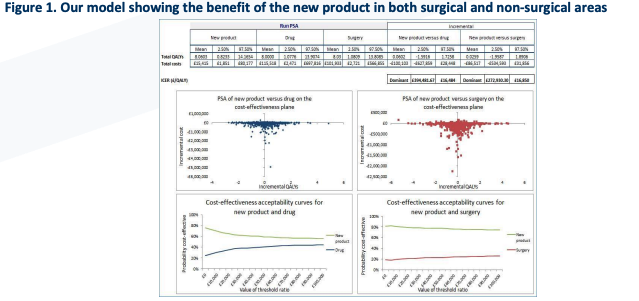Early cost-utility model to support product positioning and future HTA submissions
Supporting internal decision-making by providing an early indication of cost-effectiveness
The challenge
Our client’s new product for the treatment for benign prostatic hyperplasia (BPH) had recently entered phase III clinical trials and results were expected later that year. Economic evidence was needed for their HTA submission in order to show the benefit of their new product compared to both surgical and non-surgical treatments. Our client hoped to incorporate the results from the phase III clinical trial into a cost-utility model as soon as the data became available. Therefore, this model was intended to provide a framework and early indication of the results for future HTA submission and to inform decisions regarding product positioning within the treatment pathway.
The solution
We developed an early cost-utility model which could support the internal decision-making and included:
> A targeted literature search to inform the structure and inputs of the model > A review of the client’s phase II and phase III trial structures and expected results
> Development of decision trees to reflect each treatment pathway (surgical and non-surgical), providing options for positioning within the overall treatment pathway for BPH
> Building a cost-utility model with all relevant costs (direct and indirect) and utility values.
Key results
The preliminary results of the model showed the economic benefit associated with the new product in different treatment pathways. After running a number of deterministic and probabilistic sensitivity analyses, we were able to assess uncertainty in the results and identify the parameters which were likely to impact the overall cost-effectiveness, pending phase III trials results.
Value to the client
The cost-utility model gave an early indication of the benefits associated with the product and provided insight into how the different product parameters were likely to impact on the final cost-effectiveness results from a HTA model, dependent on final product positioning.

